Written by Will Hardy
16/11/2022
TL; DR: Want to learn more about Extruders? This blog offers an introduction to Direct Drive, Bowden and everything in between!
Bowden vs Direct Drive Extruder - What do I need in my 3D printer?
When it comes to Extruders, there isn’t one clear winner. ‘Which is the best?’ can never be definitively answered. We’d love to tell you that on every metric, our Direct Drive Hemera XS Extruder comes out on top. Granted, we think it’s an excellent choice for a lot of applications, but the reality is, the best Extruder for your needs depends on your current setup and what you’re hoping to achieve with your printer.
Making that decision can, at first glance, seem challenging. Especially when there’s so many options available, with more hitting the market every month. So, which Extruder do you choose?
Let’s start by talking through the different types of Extruder:
Bowden
Bowden Extruders are designed to be mounted away from the moving mass of the Toolhead. A piece of Bowden tube, which will vary in length depending on the size of printer and the mounting position of the extruder, is then used to connect the Extruder and the HotEnd.
Bowden setups are often found on smaller printers especially in cases where lightweight toolheads are crucial. For example, the cantilevered design of the Prusa Mini. It’s the preferred option for many low-cost 3D printers for largely the same reason. A cheaper printer generally means a less robust motion system which is poorly equipped to handle a heavy toolhead.

📷 E3D Titan Extruder in Bowden configuration
Direct Drive
Direct Drive setups have the Extruder mounted immediately before the HotEnd. In general, they have a heavier moving mass than Bowden but offer better control over the filament thanks to the distance between the gears and nozzle being much shorter. More on this later.
Thanks to recent advancements, Direct Drive can be implemented to most 3D printers without worrying about impacting performance. Direct Drive systems have now become lightweight enough that even the cheapest of printers can be upgraded with Direct Drive.


📷 Image1: Prusa MK3S+ Extruder with a V6 HotEnd. Image Source. Image2: Revo Hemera XS, our most advanced All-in-one Extrusion system yet.
There are some subsets of Direct Drive to be aware of. Namely Short Bowden, All-in-one Extruders, and Remote Direct Drive. Technically, they all fit under the umbrella term, but they’re unique enough to warrant their own breakdowns:
Short Bowden Extruders
Counterintuitively, Short Bowden Extruders are a subset of Direct Drive rather than Bowden. Like the name suggests, the Extruder and HotEnd are mounted one after the other, as in a Bowden setup. However, in this case, both are mounted on the toolhead. In other words, the Heatsink is a separate unit from the Extruder. This is a prevalent setup and is the go-to configuration for many printer manufacturers.


📷 Image1: E3D’s Titan Extruder in a short Bowden configuration with a V6 HotEnd. Image2: The Voron Afterburner. Image Source.
All-in-one Extruders
We make plenty of All-in-one Extruders at E3D. Titan Aero, Hemera and most recently Hemera XS are all examples of what we consider to be All-in-one Extruders. Rather than have the Extruder and HotEnd placed one after the other in the filament path, the Extruder and HotEnd are integrated into one unit. The benefits of this being, by integrating a Heatsink into the Extruder portion of the assembly, in theory you can make a lighter, more compact unit and have a shorter and better constrained filament path.


📷 Then and now. Titan Aero, our first foray into All-in-one Extruders alongside Revo Hemera XS, our latest.
Remote Direct Extruders
Remote Direct Extruders are an interesting concept. By mounting the motor away from the toolhead and using a flexible cable drive, these Extruders can offer the benefits of Direct Drive at a reduced weight. This flexible cable is driven by the motor and in turn actuates the gears in the Extruder. They’re an uncommon setup though, and there are a couple of reasons for this:
- Lack of options and availability. There’s only a handful of designs floating around, and even less that are commercially available to buy. So, it’s no surprise that they aren’t commonplace.
- Lightweight Direct Drive options make the weight savings less impressive. With more and more lightweight Direct Drive Extruders coming onto the market, they don’t offer enough of a weight reduction over standard Direct Drive to make the extra complexity worthwhile.

📷 A rendered example of a Remote Direct Extruder. Image Source.
Direct Drive vs Bowden
When filament is being pushed along a piece of tubing, we want the filament to closely follow the contour of the tube like so:

The filament actually does something more like this:

The longer the tube, the worse this becomes as there is a greater distance for flex to be introduced into the filament. Likewise, the more flexible the filament, the worse this becomes as the filament requires less force to bend within the tube.
This can be somewhat negated by using a bowden tube with an internal diameter closer to that of the filament. Standard tubing is often 2mm ID for 1.75mm filament, so you could use 1.9mm or even 1.85mm. This can introduce its own set of problems though. If the filament isn’t well toleranced, it can result in a large amount of load being placed on the filament due to friction. This can lead to skipped steps or even jams if your extruder doesn’t have sufficient force to overcome this. So, it’s a bit of a balancing act.
How much of an issue is this?
For the stiffer filaments, ultimately these issues can be minimised. Your control over the filament is slightly worse so you’ll run into more print artefacts like stringing, but these can mostly be accounted for with some careful slicer tuning.
If you’re hoping to print flexible filaments, you should really be looking at a Direct Drive system. The less bendy of the TPU’s (95A’s, 90A’s etc.) can sometimes be made to work on a Bowden system, but this combination is unreliable and would have to be printed extremely slow.
What's the right choice for me?
If you’re planning to buy a new printer, you will already realise that there’s more to consider than just the Extruder. We’d go as far as to say the Extruder can make or break a 3D printer. It influences what materials you can print, what print speeds you can hit and ultimately the level of print quality that you can achieve. A poor Extruder will ruin the print quality of even the best motion systems. However, a great Extruder can deliver near perfect prints from even the cheapest of 3D printers.
Where possible, we’d always recommend opting for a Direct Drive system. The reliability, robustness and print quality improvements are too good to pass up. If you opt for an All-in-one Extruder like Hemera XS, you can also get all the benefits of our Revo ecosystem in the same cost-effective package.
It might be that a Direct Drive system would make your printers toolhead too heavy or your usable build volume too small. In these cases, Bowden is still a good option, but if you can find a Direct Drive system that works for your setup, we say go for that!

📷 E3D’s Hemera Extruder is available in Direct Drive and Bowden configurations
If you’ve got a 3D printer, but you’re beginning to think you need an Extruder upgrade, there’s another thing to consider:
Are you happy to put the time into modifying your 3D printer’s firmware?
Unless an Extruder is created as a drop-in replacement for a specific 3D printer, it’s likely that you’ll need to change both your Estep’s and motor current during the upgrade. You might be able to access these through your 3D printer’s on-screen menu, but otherwise you’ll have to modify the firmware. Failure to change the motor current can damage the Extruder’s motor. We have guides for how to modify firmware on our Help Centre.
Which of the Direct Drive options is the best?
If your setup will accommodate it; we believe that All-in-one Extruders are the way to go. However, there’s no denying that Short Bowden has its place. Certain build volumes will benefit from the smaller package size in the X and Y directions.
If you’re willing to accept the slightly larger footprint an All-in-one Extruder offers, there are some clear advantages:
Reducing the distance between the hobbs and the melt zone will always improve Extruder performance as it requires less software-based compensation. Another added benefit is the improved performance with flexible filaments allowing for much higher print speeds when you use an Extruder with a short and tightly constrained filament path such as Hemera XS. There's also less risk of rotation from the mounting point to the Nozzle with an All-in-one Extruder. Finally, with a shorter Extruder you can often get out a few extra centimetres of build volume in the Z direction, handy if you like to print tall!

📷 Titan Aero’s shortened filament path compared with Titan + V6
If you’re still left wondering how best to upgrade your 3D printer; you can reach out to us using the official E3D discord. There’s plenty of 3D printing experts on hand to offer advice! Looking for more technical info? Documentation for E3D products is available on the E3D Help Centre. Don’t forget to follow our socials for the latest E3D news and updates!
If you’re looking to integrate E3D products into your system, or are perhaps looking for something custom, don’t hesitate to reach out. We’re always looking for opportunities to collaborate!
